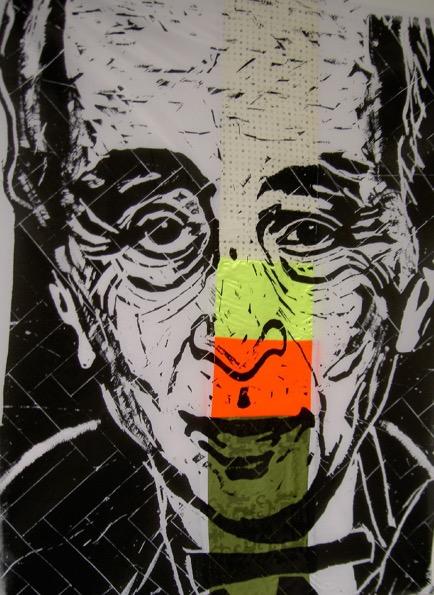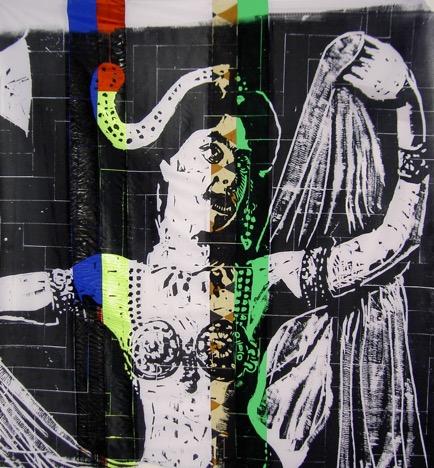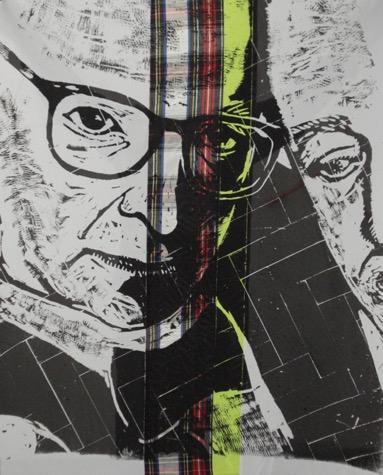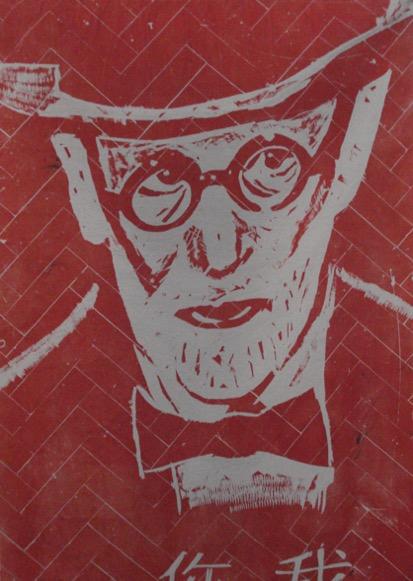How we met the artist:
'A friend invited me to see an artist project in Southwark, which occurred in an empty building where Thomas had for months been carving motifs into a 250 sqm wood floor for his project ”The Ring”. Walking over the inked faces with the large-scale prints on fabric hanging like banners from the ceiling was one of the defining moments that made me want to work with contemporary art. A former political activist, Thomas turned to art as a freer way of expression, which makes his frequently socio-political messages particularly convincing. The time, energy and craftsmanship that goes into his larger-than-life projects borders on mental and physical madness, the passionate drive to stimulate reaction and discussion is rooted in an honest desire to change our world for the better.' - Patrick Heide
About:
Thomas Kilpper is best known for his woodcut prints ranging from political scenes to portraits, of politicians, freedom fighters, spies and student protestors. But his artistic engagement runs much deeper with projects like Al Hissan–The Jenin Horse or Tumult addressing social issues and proposing transformation. Kilpper’s main concern is how to develop pressure and a need for change with art. Throughout his career, he engaged history and the public sphere with artistic interventions that reveal hidden or obscured political and social agendas. Kilpper works with collaborators, local neighbourhoods and people’s stories, using his research to create a picture of history more multilayered than the official versions.
The manifested outcome is either drawings or more often prints on paper or fabric with close-ups of faces, historical scenes of battles or police operations displaying critical statements on political and legal systems. Influential members from the business and political realms are recorded through classic, expressive, and often rough and large-scale wood or lino-cut prints in a distinctly German tradition. The fabric is frequently disturbed by sown in coloured strips or collaged fabrics to distort the portraits and question the image they convey. Most importantly, Kilpper regularly assembles his single prints to large-scale installations that occupy the space they were made in and attract public visibility in the hope of provoking dialogue.
One of Kilpper’s most impressive projects to date is the so-called Lighthouse for Lampedusa addressing the ever more pressing subject of immigration and diaspora. It is a project to engage local communities and stimulate debate about this most current of social issues, but it is also a concrete proposal to directly or indirectly lead to substantial political and humanitarian change. The idea is to build a real lighthouse from the wood of the stranded refugee boats on Italy’s most southern island Lampedusa to give orientation to the boats coming from Africa and simultaneously plant a symbolic and widely visible welcome sign.
In 2011 Kilpper presented his Pavilion for Revolutionary Free Speech for the Danish Pavilion, at the 54th Venice Biennale and was one of the Villa Romana prize winners in Florence. His works are in the collections of the Tate Gallery, London, Museum of Modern Art, Frankfurt, British Library, London and South London Gallery amongst others.
Exhibitions at the gallery:
The sea is the limit, 2017 (group show with Varvara Shavrova,Nidahl Chamekh, Massimo Ricciardo and Susan Stockwell)
Thomas Kilpper, 2012 (solo show)
Thomas Kilpper, 2010 (solo show)
Disguise, 2008 (solo show)
Selected work

Leo Castelli
Woodcutprint on fabricon stretcher
140 x 110 cm
2000

Mata Hari
Woodcutprint on fabricon stretcher
130 x 120 cm
2000

Gilbert & George
Woodcutprint on fabricon stretcher
85 x 105 cm
2000

Sigmund Freud
Woodcutprint on fabric on stretcher
100 x 150 cm
2000







